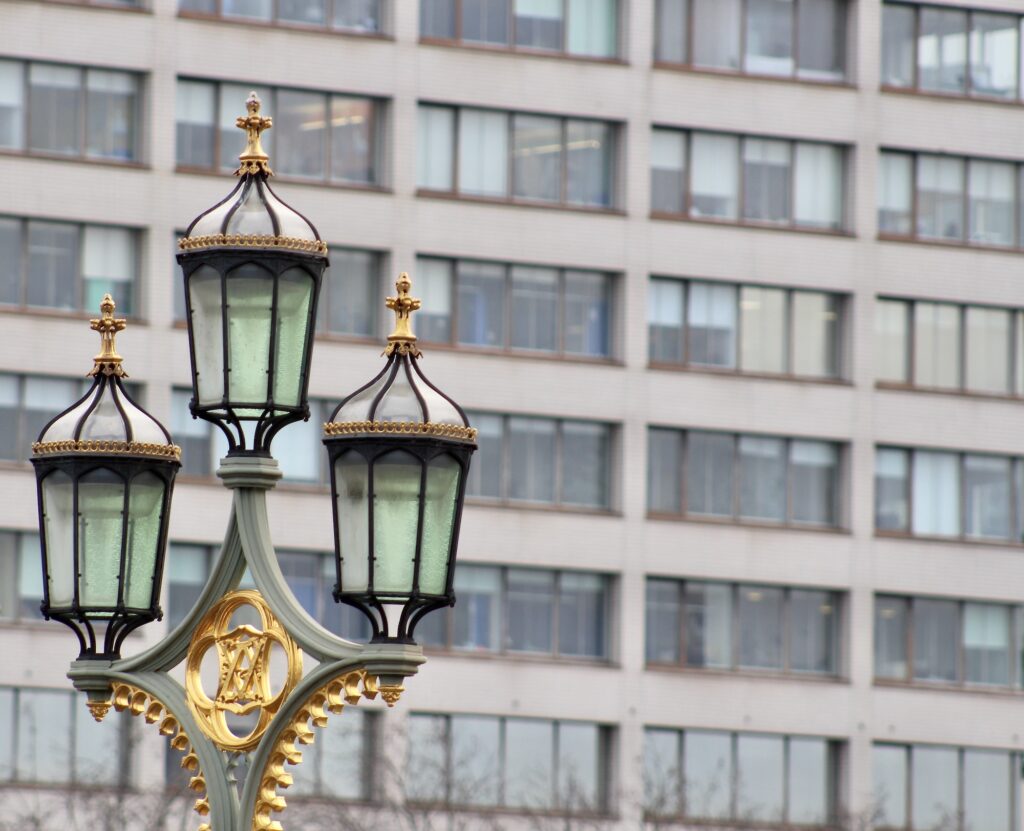From CHEVENING, through RIVER PRINCESS to SAPPHIRE OF LONDON….with help and images from Waterman and Lighterman Ben.

Walking along the banks of the River Thames in recent months, you might well have caught sight of M.V. SAPPHIRE OF LONDON in her freshly painted London Party Boats’ livery. But like many boats on the Thames, she wasn’t always like this: she has a history. And with the help of Ben of The Liquid Highway here is her story so far.

Her first iteration was as CHEVENING, built in 1974, working for Greenwich Pleasure Craft, where she was mainly used for sightseeing and private charter functions on trips between Greenwich and Westminster.
In 1984 she was bought by Catamaran Cruisers and ran on a route similar to that used by City Cruises today, from Embankment or Westminster Pier to Greenwich Pier. It was with her, a few years later in 2006, that Thames Waterman and Lighterman Ben began his career on the River Thames.

Ben has written about M.V. CHEVENING on his Liquid Highway page, and as he began his employment as an apprentice when he was sixteen to seventeen, he knows her well. He tells me “I worked as a deckhand and mate for Catamaran Cruisers” but though young and just setting out, “I was very lucky to be able to work with so many old school characters, many old lightermen who had a wealth of knowledge to pass on and they were more than happy to teach you how to handle a single screw boat.”

Ben explained that her specifications in 2007 were: “Length: 88ft; Draft: 5.18ft; GRT: 129; Passengers: 254, inc 4 crew; Engine: Volvo TMD 102A (Fitted 1997).” He adds that “CHEVENING was a lovely boat to steer, though single screw propulsion could be a little tricky in wind but she was easy to handle.”

Clearly the River Thames has been very much a part of Ben’s life from an early age. He says that he would often go to work with his Dad at Catamaran Cruisers as a young boy, and he has fond memories of the boats looking smart in the mid-nineties. In fact he thinks that the livery in the photo above was “one of the smartest”.
In September 2007 Catamaran Cruisers ceased trading. CHEVENING was sold to Thames Cruises in 2008 and by then was in “need of a refit in certain areas like her wheelhouse” and also in need of modernisation, so she was moved upriver to the boatyard on Eel Pie Island owned by Ken Dwan and Bill Ludgrove, also owners of Thames Cruises, with whom she would eventually sail. She was due an extensive rebuild and though some work was initially carried out, she languished, unfinished “moved on and off the slipway to make way for other vessels.”

Ben explains that “By 2009 she had had her wheelhouse cut off and her stair casing removed and she stayed like this until 2013 when her rebuild started to take shape.” He adds, “After seven long years, just as we were all starting to wonder if the work would ever be completed… she returned to the water once more, this time working for Thames Cruises under the new name of RIVER PRINCESS.”

The following photographs of RIVER PRINCESS and SAPPHIRE OF LONDON were taken from 2019 onwards.








In 2023 when RIVER PRINCESS was sold to London Party Boats, she went to dry dock at Bay Wharf in Greenwich where, after repair and maintenance, she was repainted. “The final touches were done on the moorings next to Millbank Pier.”
Now here, with her new name and in her new livery, is the RIVER PRINCESS metamorphosed into the SAPPHIRE OF LONDON, owned by London Party Boats Ltd. She is one of their fleet of six elegant boats available to hire for all kinds of event and party cruises through the heart of London and its famous Thames-side buildings and bridges.




Wishing her, and all who sail with her, happy times in the future.
Sources and Further Information
The Liquid Highway, September 16, 2014.
London Party Boats
The Chevening on Simplon Postcards
With many thanks to:
Thames Waterman and Lighterman Ben. His Liquid Highway, site is the world’s largest Thames vessel photo gallery and major resource for anyone wishing to research boats both past and present that have operated along the Thames.














